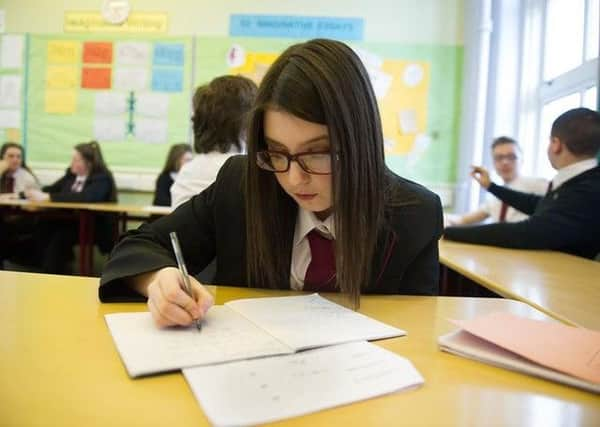'Composite classes' widespread in Scottish schools


All secondaries in Edinburgh have classes where pupils from at least two different year groups are taught together, according to figures obtained through Freedom of Information (FOI) by the Scottish Conservatives.
The party say multi-level classes are now "rooted in the structure of teaching" and blame it on a fall in teacher numbers across Scotland since the SNP took office in 2007. Teaching unions put it down to a “climate of austerity” in recent years.
Advertisement
Hide AdAdvertisement
Hide AdBut the Scottish Government says teacher numbers soared by over 1,000 in the past year and stand at their highest level since 2008.
A total of 29 local authorities, from 32 across Scotland, responded to the Tories’ FOI request and all were found to have some schools where multi-level teaching takes place.
The practice happens in at least half of schools across all 29 councils who responded, while 26 of them said it takes place in at least 75 per cent of their schools.
Tory education spokesman Jamie Greene said: “The SNP have slashed thousands of teachers from our classrooms since taking office, which has led to this continued rise in multi-level teaching and no reduction in class sizes.
“John Swinney has failed to address this problem year after year despite condemnation from the education sector, going as far as describing valid concerns as a ‘moan-fest’ when we raised it in Parliament.
“These figures show how widespread multi-level teaching is across Scotland. It is now firmly rooted in the structure of teaching through necessity, not choice."
The figures show 23 council areas have secondary schools with classes teaching pupils from at least three different year groups together, while 15 councils have classes teaching three levels or more in at least half of their schools.
In addition ten areas have classes teaching four levels or more in at least some of their schools.
Advertisement
Hide AdAdvertisement
Hide AdIn Edinburgh, all secondary schools have classes teaching two levels or more, while 39 per cent have three levels or more and 17 per cent have four or more.
Larry Flanagan, general secretary of the EIS teaching union, said composite classes could be "justified on educational grounds" in primary schools and rural schools with small rolls to keep them viable.
He said: "In recent years, however, the climate of austerity has created substantial additional pressures on schools and this has coincided with an increase in the use of composite classes in schools.
"Clearly, it is regrettable that wider financial pressures have compelled schools to make such difficult decisions. Scotland certainly needs more teachers to reduce class sizes and to support education recovery.”
But a Scottish Government spokeswoman said: “Multi-level teaching has long been part of Scottish education and teachers are well-skilled to take account of the needs of their pupils.
“During inspections, Education Scotland inspectors evaluate the extent to which children and young people are being suitably supported and challenged in their learning.
“The most important thing is the outcome for the young person – and in 2018/19, 92.9 per cent of pupils went on to positive destinations such as work, training or further study nine months after leaving school.”
There was an annual increase in teaching numbers of 1,153 during 2020, figures in December revealed.
A message from the Editor:Thank you for reading this article. We're more reliant on your support than ever as the shift in consumer habits brought about by Coronavirus impacts our advertisers.
If you haven't already, please consider supporting our trusted, fact-checked journalism by taking out a digital subscription.
Comments
Want to join the conversation? Please or to comment on this article.